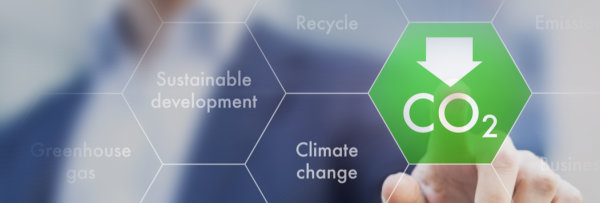INPP aims to reduce greenhouse gas emissions
2022

The Ignalina Nuclear Power Plant (INPP) has calculated for the first time the greenhouse gas (GHG) emissions generated directly during the operation of the plant. The INPP set such a goal in 2021 in an approved operating strategy based on EU best practices and the recommendations of the Management Coordination Center (MCC), presented to the enterprise, to strengthen the area of sustainable development, and one of its areas is the management of greenhouse gas emissions.
In 2021, direct (volume 1 and volume 2) emissions were estimated, which include the fuel consumed by equipment and transport operated by INPPs, fuel required for heat production, and electricity consumed. The total direct CO2-equivalent emissions in 2021 are 3,744 tons.
The INPP is a nuclear facility that is currently in the decommissioning phase. Although the specific nature of the activity makes it difficult to rationally compare the emission intensity of the INPP's activities with other similar nuclear facilities, the enterprise seeks to objectively estimate the annual volume of emissions per employee. Accordingly, it was established that it was 17.63 tons per employee in 2021.
“Understanding that our activities also contribute to global climate change and considering the efforts made by Lithuania and the European Union to address this challenge, we had to take stock of our CO2e footprint. Only by having primary baseline data can we purposefully manage the carbon footprint we leave behind,”- said Donatas Juodpusis, Head of Sustainable Development at the INPP.
It should be noted that the largest part of the INPP's emissions comes from electricity consumption - more than 70%, followed by heating - about 15%, and fuel used in technological installations - almost 11%. The rest of the emissions are attributed to transport, which includes cars, heavy-duty vehicles, rail transport and other types of transport.
“Considering the sources of GHG emissions, the greatest attention and possible mitigation measures fall on electricity, heat, and fuel for power generation. Since January 1, 2022, we have purchased and used 100% green electricity only, so emissions this year will be reduced by about 70% by this step alone. Undoubtedly, the global energy crisis has introduced a lot of uncertainty about the cost of energy resources, their availability and the environmental friendliness of these resources. And although specific plans will be prepared in the near future, assessing the current situation in the markets and agreeing with key stakeholders, we expect to continue to buy green electricity. Our goal is to control and reduce the impact of our operations on planet Earth, especially when most of the NPPs' activities are financed with EU funds, and the EU Green Deal aims to reduce CO2 emissions and become the first climate-neutral continent by 2050," Juodpusis said.
An associative photo from Shutterstock is used for the article

